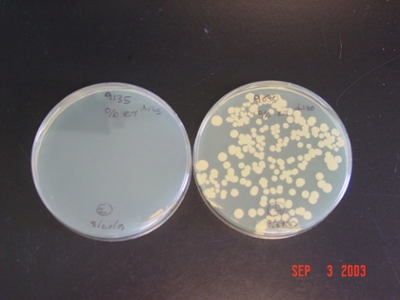Research
My research program is divided between to areas: genetic engineering of mammals and horse genomics. Within the work centered on transgenic animal biology we work on a number of gene systems designed either as research models (ovine growth hormone transgenic mice) or to livestock for use in agriculture. Within the latter area we are focused on manipulating the mammary gland to improve the properties of milk for human consumption. We also carry out work to improve the technology associated with genetically engineering large animals.
Mammary Gland Ddirected Transgenes:
The expectation for this work is that the expression of specific transgenes in the mammary epithelium will lead to altered processing properties, changed lipid composition, increased anti-microbial properties, or result in other health-related or economically valuable alterations in the milk. We have worked on the expression and characterization of transgenic animals (mice, goats, cows) expressing human lysozyme, human lactoferrin, bovine kappa-casein, and the rat stearyol-CoA desaturase. The most advanced work, in collaboration with Dr Elizabeth Maga, concerns the consequences of expressing human lysozyme in the milk of dairy animals. We have an established a herd of human lysozyme transgenic dairy goats and are currently studying the properties of this milk. We are also studying the potential effects of carrying and expressing this transgene on the health and welfare of the animals and the safety of the dairy products for human consumption. In this regard, recent publications report on the effects on the health of the GI tract in young pigs consuming goats’ milk that contains human lysozyme.

Bacterial plates showing growth after 48 hours at room temperature in un-pastuerized human lysozyme-containing milk (left) and control milk (right).
Mapping the Horse Genome:
With a colleagues in the School of Veterinary Medicine, my laboratory is involved in an international effort to develop genomic tools for use in horse research. We have contributed to international efforts to develop physical and genetic maps of the horse genome and the application of these tools to the identification of loci responsible for traits of interest in the horse. In addition to developing genomic tools we are currently working on understanding the molecular mechanisms responsible for cerebellar abiotrophy in Arabian horses and on efforts to preserve the Santa Cruz Island line of horses.
